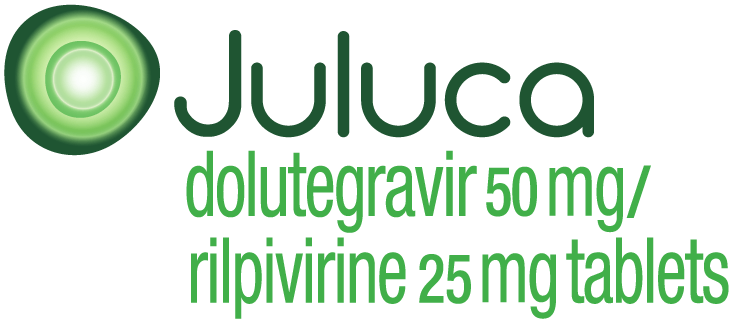For virologically suppressed adult patients with HIV-1. See Full Indication.
JULUCA | Patient-Reported Outcomes
Patient-Reported Outcomes Through 148 Weeks1,2
Secondary objectives of SWORD included assessments of treatment satisfaction and treatment symptom index scores. Two measures were used to assess changes from baseline in these patient-reported outcomes. These open-label data collected directly from the patients should not be used to infer clinical significance and should not be interpreted as a reflection of the safety or efficacy of a regimen.
HIV Treatment Satisfaction Questionnaire, status version (HIVTSQs)
- 10-item, scientifically validated, patient self-reported instrument that measures treatment satisfaction overall and by specific domains1,2
- Each item is scored on a scale of 0 to 60; a higher score indicates greater satisfaction
Patients Who Switched to JULUCA Reported Improvement in Overall Treatment Satisfaction
Mean (95% CI) Change From Baseline of Treatment Satisfaction Total Score Assessed by HIVTSQs1,2
Higher score indicates greater improvement.
Clinical significance is unknown.
- Mean treatment satisfaction score was high at baseline for both groups
- Patients taking JULUCA Day 1 through Week 148 showed and maintained substantial improvement from baseline. In parallel, patients who switched to JULUCA at Week 52 reported similar improvement to those taking JULUCA Day 1 through Week 148
ART=antiretroviral therapy; BL=baseline; CI=confidence interval.
Symptom Distress Module
- 20-item, scientifically validated, patient self-reported measure that addresses the presence and perceived distress of symptoms commonly associated with HIV infection or its treatment as reported by symptom bother score1,2
- The symptom bother score assesses the level of bother with a total score for all symptoms ranging from 0 to 80, where a lower score indicates less symptom bother
Patients Who Switched to JULUCA Reported Improvement in Symptom Bother Score
Mean (95% CI) Change in Treatment Symptoms Assessed by Symptom Bother Score1,2
Lower symptom score indicates less symptom bother. Clinical significance is unknown.
- Low levels of treatment bother were reported at baseline for both groups
- Patients taking JULUCA Day 1 through Week 148 reported initial improvement from symptom bother with attenuated improvement at each time point up to Week 148. Patients who switched at Week 52 reported similar outcomes to those taking JULUCA Day 1 through Week 148
References:
- Oglesby A, Angelis K, Punekar Y, et al. Patient-reported outcomes after switching to a 2-drug regimen of dolutegravir + rilpivirine: Week 148 results from the SWORD-1 and SWORD-2 studies. Poster 2484 presented at IDWeek; October 2-6, 2019; Washington, DC.
- Data on file, ViiV Healthcare.
You may also be interested in
EFFICACY & RESISTANCE PROFILE

ADVERSE REACTIONS

LIPID AND FRACTURE DATA AND A DEXA SUBSTUDY



